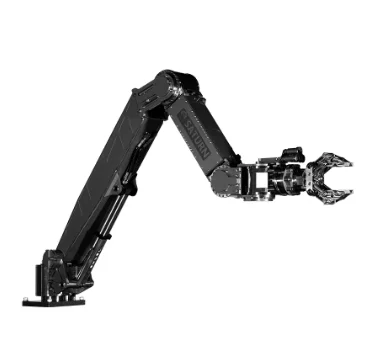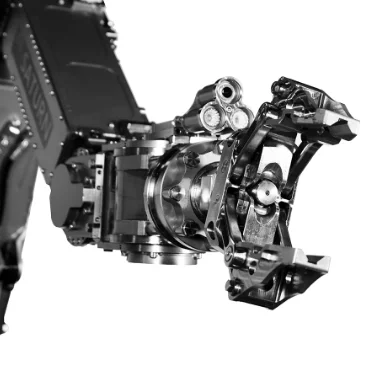Exploring the Functionality and Design of Hydraulic Manipulators in Robotics
Welcome to the exciting world of robotics, where innovation and technology collide to create marvels that were once only imaginable in science fiction. One such incredible creation is the hydraulic manipulator, a versatile and powerful tool that has revolutionized the field of robotics. In this blog post, we will delve deep into the functionality and design of hydraulic manipulators, uncovering their advantages, applications, and how they work in perfect harmony with robots. So fasten your seatbelts as we embark on an exhilarating journey through the realm of hydraulic manipulators!
Advantages and Applications of Hydraulic Manipulators
Hydraulic manipulators play a significant role in various industries, thanks to their numerous advantages and wide range of applications. Let's explore some of the key benefits that make hydraulic manipulators a popular choice in robotics.
Hydraulic manipulators offer exceptional strength and lifting capability. They can handle heavy loads with ease, making them ideal for tasks that require substantial power and precision. Whether it's moving large objects or performing intricate maneuvers, hydraulic manipulators excel in providing the necessary force to get the job done efficiently.
Another advantage is their versatility. Hydraulic manipulators come in different sizes and configurations, allowing them to adapt to diverse environments and perform a wide array of tasks. From assembly lines in manufacturing plants to construction sites, these versatile machines can be customized according to specific requirements.
Moreover, hydraulic systems are known for their smooth operation and precise control. Their ability to generate consistent forces enables operators to manipulate objects with accuracy while minimizing the risk of damage or accidents.
In addition to these practical advantages, hydraulic manipulators find applications across various industries. In manufacturing facilities, they are used for material handling, assembly operations, and even welding tasks. In construction projects, these machines prove invaluable for lifting heavy equipment or materials at heights safely.
Furthermore, hydraulic manipulators have proven effective in hazardous environments such as nuclear power plants or offshore oil rigs where human intervention may pose risks. These robots can perform complex operations without endangering human lives.
Overall,the advantages offered by hydraulic manipulator technology make them an indispensable tool across multiple industries.
Its incredible strength,lifting capabilities,and precise control ensure efficient task execution.
Their versatility allows for flexibility on different work sites.
Additionally,the safety factor associated with using hydraulics further extends its applicability.
Hydraulic Manipulation has revolutionized how we perceive robotic assistance,making it an exciting field with endless possibilities
Understanding the Design of Hydraulic Manipulators
When it comes to the design of hydraulic manipulators, engineers and designers have to carefully consider a variety of factors to ensure optimal performance and functionality. The design process involves taking into account aspects such as size, weight, strength, flexibility, and precision.
One important aspect of the design is determining the number and configuration of hydraulic cylinders used in the manipulator. These cylinders play a crucial role in providing the necessary force and motion for various tasks. Depending on the specific application, different types of cylinders may be utilized, such as single-acting or double-acting cylinders.
Another key consideration is the selection and arrangement of valves that control fluid flow within the system. Valves are responsible for directing hydraulic pressure to different actuators in order to achieve precise movements. Proper valve placement ensures smooth operation while maintaining stability and safety.
The overall structural framework is also an essential element in designing hydraulic manipulators. It needs to be sturdy enough to handle heavy loads while still allowing for sufficient range of motion. Materials like steel or aluminum alloys are commonly used due to their strength-to-weight ratio.
Additionally, sensors are integrated into the design to provide feedback on position, force exertion, and other important parameters during operation. This allows for real-time monitoring and adjustment for improved accuracy.
In conclusion, understanding how hydraulic manipulators are designed involves careful attention not only towards mechanical components but also towards electrical systems that control them seamlessly together with software algorithms programming coordination between human operators' instructions with electronic controls through intuitive interfaces facilitating versatility across applications where they can operate optimally at different scales implementing advanced functionalities making their designs robust yet flexible!

How Hydraulic Manipulators Work in Robotics
Hydraulic manipulators play a crucial role in the field of robotics, providing precise and powerful movements that are necessary for various applications. But how exactly do these hydraulic systems work?
At their core, hydraulic manipulators utilize fluid power to generate force and movement. The system consists of three main components: a pump, cylinders or actuators, and control valves. The pump is responsible for pressurizing the fluid (usually oil) which then flows into the cylinders through the control valves.
When a command is given to the manipulator, the control valves direct this pressurized fluid to specific actuators. These actuators act as muscles within the robotic arm, converting hydraulic energy into mechanical energy to move joints and perform tasks with precision.
The advantage of using hydraulics in robotics lies in its ability to provide high power density and excellent controllability. Hydraulic systems can generate significant amounts of force even at low speeds, making them ideal for heavy lifting operations or tasks that require strong gripping capabilities.
Additionally, hydraulic manipulators offer smooth and precise movements due to their ability to vary force output by adjusting valve positions. This feature allows for accurate positioning and delicate handling of objects during assembly lines or surgical procedures.
Moreover, hydraulic systems are known for their durability and reliability. They can withstand harsh environments without compromising performance or efficiency over time.
In conclusion,the functionality of hydraulic manipulators in robotics is essential for achieving complex tasks that require strength, precision, and adaptability. By harnessing fluid power technology,these systems enable robots to carry out intricate maneuvers with ease while maintaining robustness throughout operation. Zhejiang CathayBot Technology Co., Ltd., an industry leader in robotic solutions,continues to innovate designs that optimize both functionality and design aspects of hydraulic manipulators,opening up new possibilities in various industries ranging from manufacturing processes to medical applications.
Benefit of Using Hydraulic Manipulators
One of the key benefits of using hydraulic manipulators in robotics is their impressive strength and power. Hydraulic systems are capable of generating high amounts of force, making them ideal for handling heavy loads and performing tasks that require significant lifting or pushing capabilities. With hydraulic manipulators, robots can tackle demanding applications with ease.
Another advantage of hydraulic manipulators is their versatility. These systems can be designed to perform a wide range of movements, including rotation, extension, and bending. This flexibility allows robots to adapt to different work environments and perform complex tasks with precision.
Hydraulic manipulators also offer excellent control and accuracy. The use of hydraulics enables precise positioning and smooth movement, ensuring that robots can handle delicate objects or perform intricate maneuvers without causing damage.
In addition to their strength and versatility, hydraulic manipulators are known for their durability and reliability. The components used in these systems are designed to withstand harsh conditions such as extreme temperatures or exposure to chemicals. This ensures that hydraulic manipulators can operate consistently in challenging industrial settings.
The benefit of using hydraulic manipulators lies in their ability to enhance the performance and efficiency of robotic systems across various industries. Whether it's lifting heavy objects on construction sites or performing intricate assembly tasks in manufacturing facilities, these powerful machines provide the necessary force, control, flexibility, and reliability needed for successful automation processes.

Conclusion
In this blog post, we have explored the functionality and design of hydraulic manipulators in robotics. These advanced machines offer numerous advantages and applications across various industries.
Hydraulic manipulators provide unparalleled strength, precision, and versatility in performing complex tasks. Their ability to handle heavy loads with ease makes them ideal for industries such as manufacturing, construction, and logistics. Additionally, their flexibility allows them to be seamlessly integrated into existing robotic systems.
The design of hydraulic manipulators is a result of careful engineering and innovation. The combination of hydraulic cylinders, pumps, valves, and actuators creates a powerful system capable of executing precise movements with speed and accuracy.
When it comes to robotics, hydraulic manipulators play a crucial role in enhancing productivity and efficiency. They enable robots to perform tasks that require high force or delicate control by leveraging the power of fluid pressure. Whether it's lifting heavy objects or delicately manipulating fragile items, hydraulic manipulators can handle it all.
One significant benefit of using hydraulic manipulators is their ability to withstand harsh working conditions without compromising performance. With rugged designs built to withstand extreme temperatures, dust particles, moisture exposure, they are reliable workhorses even in challenging environments.
Zhejiang CathayBot Technology Co., Ltd., stands at the forefront of developing cutting-edge hydraulic manipulator technology tailored for specific industry needs. By constantly pushing boundaries through research and development efforts,CathayBot has become an industry leader in providing innovative solutions for automation challenges.
In conclusion,HYDRAULIC MANIPULATORSare revolutionizing the fieldof robotics withtheir exceptional functionalityanddesign.
These incredible machineshave transformed howwe approach complextasksin variousindustries.
Their precision,power,and durability make theman invaluable assetin improvingproductivityand achievingefficiency goals.
Whetherit'sliftingheavy loadsormanipulatingfragileitems,h ydraulicmanipulat orscanhandlethetoughestchallenges with ease.
- Art
- Causes
- Crafts
- Dance
- Drinks
- Film
- Fitness
- Food
- Games
- Gardening
- Health
- Home
- Literature
- Music
- Networking
- Other
- Party
- Religion
- Shopping
- Sports
- Theater
- Wellness


